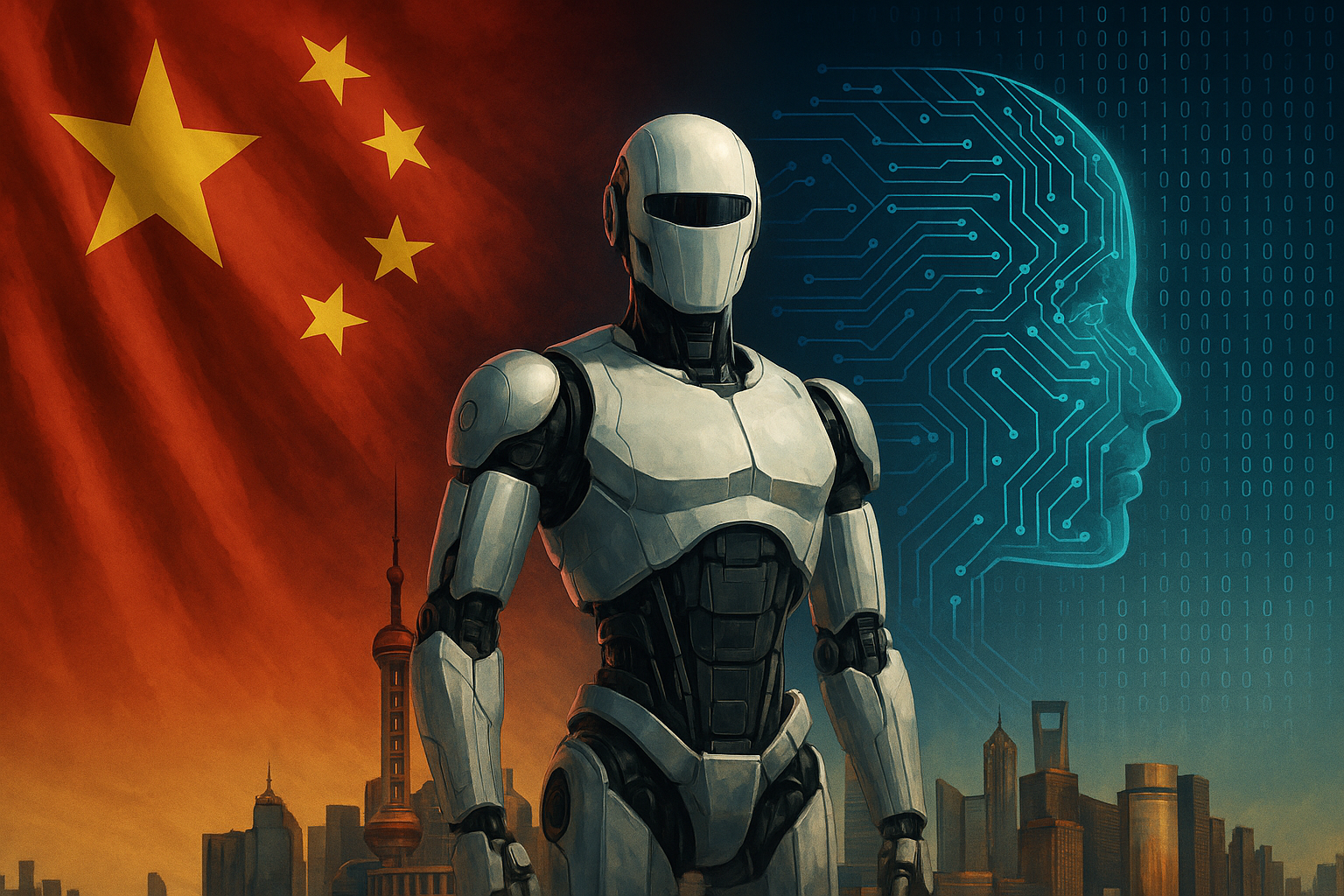When OpenAI blocked China’s access to its cutting edge artificial intelligence systems in July 2024, many in the West assumed it would stall China’s AI ambitions. Instead, it may have lit a fire under them.
Chinese developers, engineers, and policymakers quickly pivoted embracing open-source large language models (LLMs) and launching full-scale investments into domestic AI development. This moment became a pivotal inflection point, reinforcing China’s industrial policy to become a global AI superpower.
In the first 100 days after the OpenAI block, Chinese tech giants including Baidu, Tencent, Alibaba, and startups like Zhipu.ai accelerated research and development in foundation models. With billions in state and private capital being poured into GPU farms, chip design, and algorithm optimization, China began rapidly closing the gap with U.S. innovation.
Industrial Policy Meets Tech Ambition
At the core of China’s strategy is an aggressive industrial policy focused on AI sovereignty. According to a 2025 report from Tsinghua University’s Institute for Artificial Intelligence, the Chinese government allocated over $35 billion to AI development in the past two years surpassing even the European Union’s investments.
In 2023, the Ministry of Industry and Information Technology (MIIT) issued an updated roadmap targeting key milestones: AI chip self reliance by 2027, AI model benchmarking parity with the West by 2026, and national level AI applications across healthcare, military, education, and infrastructure by 2028.
These goals are supported by incentives such as tax breaks, government-backed venture capital, and AI focused tech zones in cities like Beijing, Shenzhen, and Hangzhou.
Dr. Li Fei-Fei, a Stanford University professor of Chinese descent, commented in a recent panel, “While the West relies on free market dynamics, China’s command and control structure enables long term investment in AI at a national scale. This approach could eventually give China the edge in AI deployment.”
Baidu’s Ernie Bot vs. ChatGPT
One of the most high profile examples of China’s AI superpower quest is Baidu’s Ernie Bot, built on the ERNIE 4.0 foundation model. While early iterations were criticized for underperformance, the latest version boasts multilingual capabilities, vision language integration, and a strong grasp of scientific reasoning.
After OpenAI blocked access, Baidu announced Ernie Studio a full stack suite similar to OpenAI’s API. Within 6 months, over 300,000 developers signed up. Ernie Bot now handles over 60 million queries per day. Chinese government agencies have begun replacing foreign AI tools with Ernie in sensitive sectors. By March 2025, Ernie achieved a BLEU score and MMLU performance comparable to GPT-4.
Open Source Renaissance in China
With Western tools locked away, Chinese developers turned to open source. Models like InternLM, ChatGLM3, and DeepSeek Coder emerged as community driven alternatives. Unlike OpenAI or Google DeepMind, these models are hosted on platforms like Hugging Face and GitHub, enabling grassroots innovation.
Zhang Wei, a 27 year old AI engineer from Chengdu, shared his experience, “When OpenAI was banned, we didn’t stop building we just shifted focus. I fine tuned a ChatGLM3 model on Chinese medical data for rural clinics. It now answers 15,000 patient questions monthly.” This growing open source movement fosters a decentralized approach to AI, one that may ultimately boost China’s long term AI superpower ambitions.
Chip Wars and Hardware Independence
AI software cannot run without powerful hardware and that’s where China has faced the most severe setbacks due to U.S sanctions on advanced chips from NVIDIA and AMD. But here again, China is adapting. Tech firms like Huawei and Biren are developing domestic AI accelerators to rival NVIDIA’s H100. Huawei’s Ascend 910B chip, launched in 2024, is already powering several of the country’s leading AI cloud services.
Professor Yang Xue of Peking University stated, “China is now operating on multiple tracks developing software while simultaneously building hardware capabilities. They’re recreating the entire AI stack under immense geopolitical pressure.”
A Startup Founder’s Insight
Liu Min, founder of an AI startup in Guangzhou, shared her journey, “Initially, we relied on OpenAI’s API for product development. After the ban, we retrained our models on InternLM and shifted to Ascend based compute. It was hard, but it made our system fully independent.”
Today, Liu’s company powers AI customer service for over 40 e-commerce brands across Asia proof that resilience and adaptation are possible even under global tech sanctions.
What This Means for the World
As China cements its path toward becoming an AI superpower, global AI geopolitics are shifting. The bifurcation of AI systems Western vs. Chinese could result in divergent standards, ethics, and uses of artificial intelligence.
From surveillance tech to medical diagnostics to generative content tools, Chinese AI is becoming self-reliant and globally competitive. It’s no longer just a consumer of American innovation it’s a contender, a builder, and soon, potentially a leader.
With countries in Southeast Asia, Africa, and Latin America warming to Chinese tech partnerships, we could witness a multi polar AI world emerging in the next decade.
The Race is On
Despite initial skepticism, China has proven that determination, capital, and policy alignment can counter technological barriers. Whether through open source LLMs, domestic chips, or billion dollar R&D efforts, it is rapidly evolving into a formidable AI superpower. The OpenAI ban wasn’t a setback it was a catalyst. And as the rest of the world watches, China isn’t asking for access anymore. It’s building its own future.

